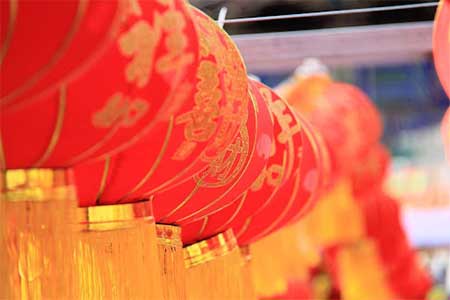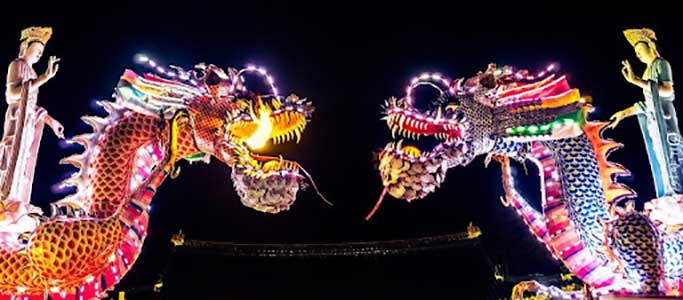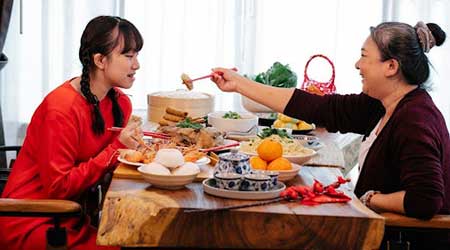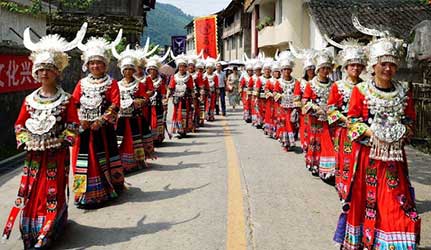About the Qixi Festival
 If you missed Valentine’s Day in February, you might be able to make up for it a little bit by celebrating the holiday on the Chinese version of it, coming up on August 10th. Chinese Valentine’s Day, also known as the Qixi Festival, is a celebrated holiday full of love and romance in Chinese culture. It usually falls on the seventh day of the seventh lunar month. This festival has been celebrated for centuries and is rooted in a poignant legend.
If you missed Valentine’s Day in February, you might be able to make up for it a little bit by celebrating the holiday on the Chinese version of it, coming up on August 10th. Chinese Valentine’s Day, also known as the Qixi Festival, is a celebrated holiday full of love and romance in Chinese culture. It usually falls on the seventh day of the seventh lunar month. This festival has been celebrated for centuries and is rooted in a poignant legend.

The History of Qixi Festival
The Legend of Niulang and Zhinü
 The history of Chinese Valentine’s Day begins with the legend of Niulang and Zhinü. According to the legend, Zhinü, a beautiful weaver fairy, descended from heaven and fell in love with Niulang, a lowly cowherd. They lived happily together and had two children. However, their joy was short-lived, as Zhinü’s mother, the Chinese goddess of heaven, disapproved of their union and forced her to return.
The history of Chinese Valentine’s Day begins with the legend of Niulang and Zhinü. According to the legend, Zhinü, a beautiful weaver fairy, descended from heaven and fell in love with Niulang, a lowly cowherd. They lived happily together and had two children. However, their joy was short-lived, as Zhinü’s mother, the Chinese goddess of heaven, disapproved of their union and forced her to return.
Devastated by the loss of his love, Niulang pursued Zhinü with the help of a magical cow. Zhinü’s mother then created the Milky Way River to separate the lovers. Magpies touched by their love then decided to form a bridge once a year to allow the couple to see each other. The holiday is set to commemorate the legend of their love.
Traditional Customs of Qixi Festival
 Traditionally, there are many customs and traditions done in celebration of Chinese Valentine’s Day. The women will dress up and wear Hanfus, which are traditional long flowing robes that have loose sleeves and belts. Usually the day will be spent preparing flowers, tea, fruit, wine and prayers to Zhinü to grant their wishes. Single women will usually pray for a spouse, and married women will usually pray for a baby.
Traditionally, there are many customs and traditions done in celebration of Chinese Valentine’s Day. The women will dress up and wear Hanfus, which are traditional long flowing robes that have loose sleeves and belts. Usually the day will be spent preparing flowers, tea, fruit, wine and prayers to Zhinü to grant their wishes. Single women will usually pray for a spouse, and married women will usually pray for a baby.
Though regionally, different areas may vary slightly with food and traditions, a popular dish made during the festival is called Qiaoguo. Qiaoguo is a thin piece of fried bread made with honey, oil, flour, and sugar. The delicacy once consumed is believed to help the couple of legends unite.
Modern Qixi Celebration
Today, the holiday has become much more commercialized and several of the more traditional customs of the holiday have disappeared over time. Stores will often offer discounts, enticing lovers to buy gifts for their partners. Nowadays people spend the holiday similar to their western counterparts, by going on dates and buying each other gifts.
Other activities include stargazing in remembrance of the legend of Niulang and Zhinü, and praying for the same things as the traditional prayers mentioned above.
Like the legend of Niulang and Zhinü, we try to bridge the gap between manufacturing in the U.S. and China. If you want to learn more about Chinese culture and manufacturing, feel free to check out some our other posts
